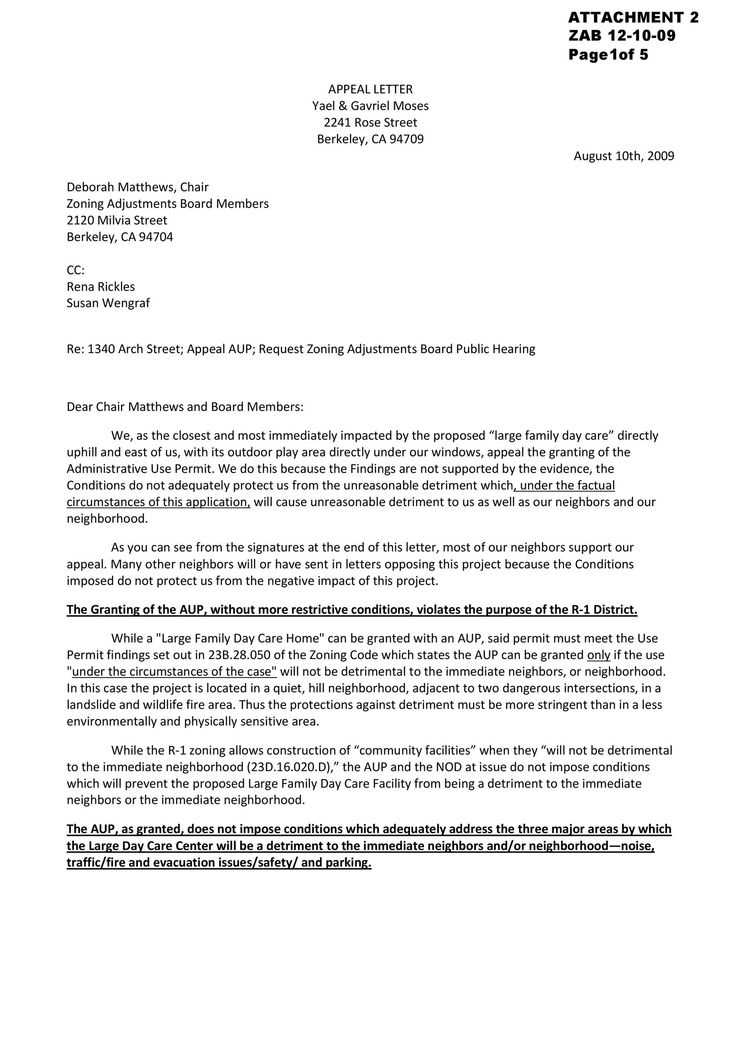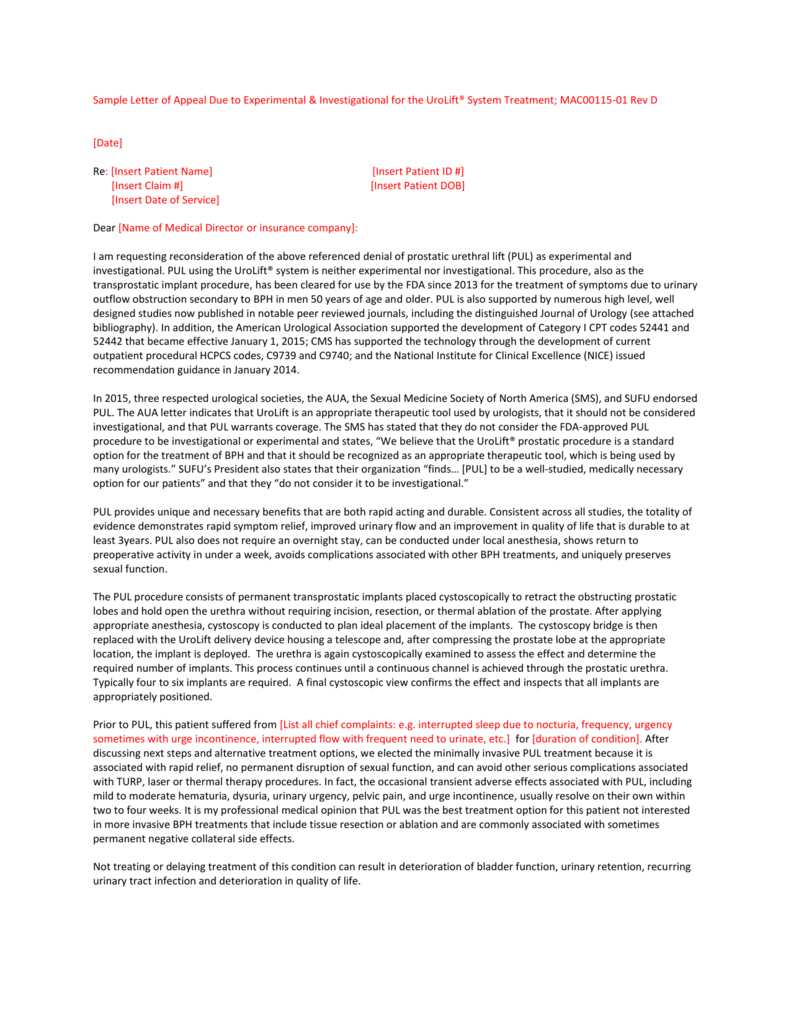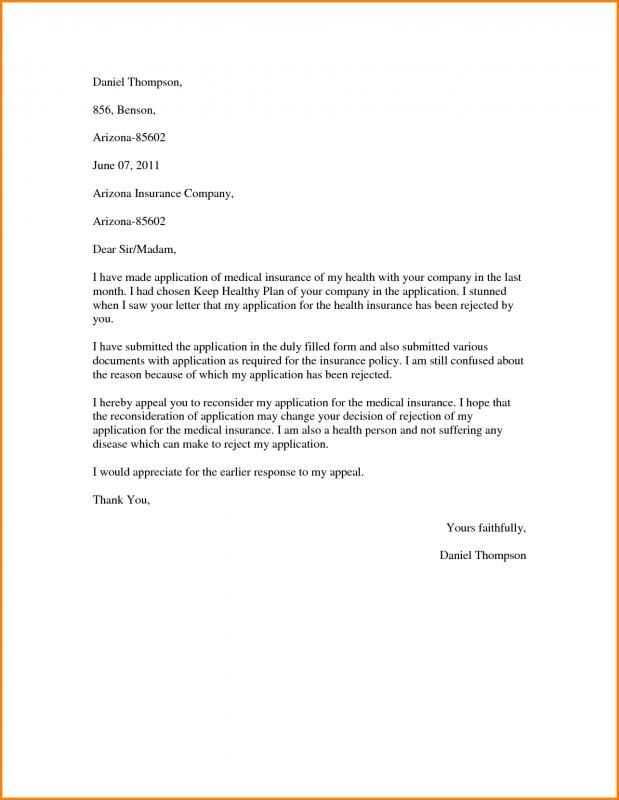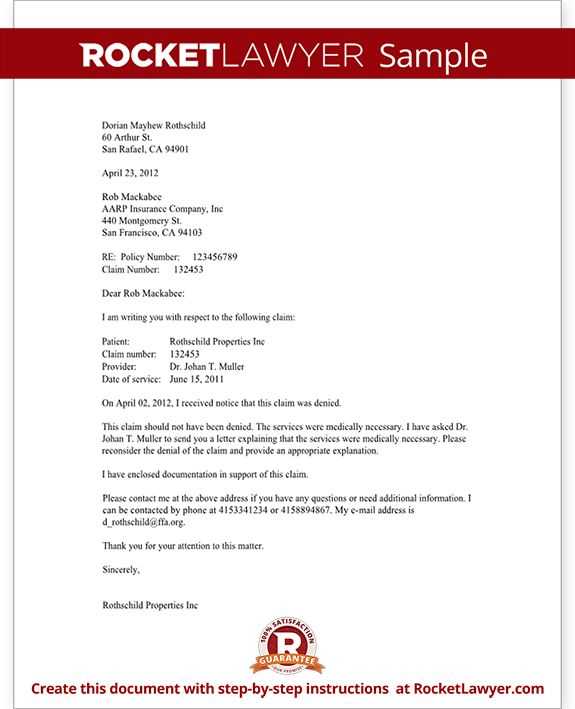Insurance Denial Appeal Letter Template Guide

Dealing with the rejection of a claim can be frustrating, especially when you feel that the decision was unfair. It’s crucial to respond correctly to increase the chances of having the initial decision reconsidered. A well-structured response can make a significant difference in achieving a favorable outcome.
Understanding the reasons behind the refusal is the first step. Once you are clear on why the claim was turned down, you can address the specific issues in your response. This increases the chances of a positive resolution, as the response will be tailored to the exact reasons provided by the company.
Crafting a clear and professional communication is essential in this process. It’s important to outline your case logically, provide necessary documentation, and emphasize key points that support your position. The goal is to persuade the reviewing party that the initial assessment was incorrect or incomplete.
How to Start Your Appeal Letter
The beginning of your response plays a crucial role in setting the tone for the rest of your document. It is essential to clearly identify the reason for writing and establish the context from the very start. A strong opening will guide the reader toward understanding your intentions and the purpose of your communication.
Introduce Yourself and Provide Reference Details
Start by stating your full name, policy or claim number, and any relevant dates. This information helps the recipient quickly locate your file and understand the specific case at hand. Being clear and direct from the outset will ensure that the reader knows exactly who is addressing them and what the matter concerns.
State the Reason for Writing
Once you’ve introduced yourself, explain briefly why you are reaching out. Mention that you are contesting the original decision and believe it was made in error or is worth reconsidering. Keep this part concise but firm, setting the stage for the rest of your argument.
Understanding Insurance Denial Reasons
Before proceeding with any response, it’s vital to fully understand the reasoning behind the decision. A clear grasp of why a request was not accepted allows you to address specific concerns effectively. This knowledge forms the foundation for crafting a persuasive and accurate response.
Common Grounds for Rejection

Rejections often occur due to incomplete documentation, missed deadlines, or failure to meet certain criteria outlined in the original agreement. Understanding these reasons will allow you to focus on providing the necessary information that was perhaps overlooked or misunderstood.
How to Address Specific Issues
Once the rejection reasons are clear, you can tailor your response to directly address each point. If the rejection was based on missing documents or incorrect information, be sure to include accurate and complete details. This approach helps to clarify misunderstandings and strengthens your case.
Key Elements of an Appeal Letter
When addressing a decision that you believe was made in error, it’s essential to include several key components in your response to make it effective. These elements ensure that your communication is clear, well-structured, and persuasive, increasing the chances of a successful reconsideration.
Start by clearly stating the purpose of your communication. Follow this with a concise explanation of the issue at hand, referencing the original decision and providing context. Include any supporting evidence that strengthens your position, such as documents or additional information that was not considered initially.
Finally, make sure to express your desired outcome. Be specific about what you are requesting and how you believe the decision should be modified. A polite and professional tone throughout will further enhance the credibility of your message, making it more likely to be taken seriously.
Common Mistakes to Avoid in Appeals
When contesting a decision, it’s easy to make errors that could hurt your chances of success. Avoiding common pitfalls is essential to ensure your response is as effective and professional as possible. Being aware of these mistakes can help you present a stronger case and increase your likelihood of a favorable outcome.
Failing to Provide Clear Documentation
One of the most frequent errors is not including the necessary documents or providing unclear evidence. Supporting materials should be easy to understand and directly relevant to the issue. Without proper documentation, your case may be dismissed or delayed.
Using an Aggressive or Negative Tone

While it’s important to be firm and assertive, coming across as aggressive or hostile can harm your case. Maintain a professional and respectful tone throughout your response, focusing on the facts rather than emotions. A calm and reasoned approach will make a stronger impression.
Steps to Strengthen Your Argument
To improve the chances of a successful reconsideration, it is crucial to present a well-supported and convincing case. Strengthening your argument involves presenting clear, logical points and backing them up with compelling evidence. A well-structured response increases the likelihood of having the initial decision overturned.
Start by focusing on the most critical points of the original decision and providing a detailed explanation of why they were incorrect or incomplete. Gather all necessary evidence that supports your stance, such as relevant documents, expert opinions, or additional information that was not previously considered. Present this information in a clear, organized manner to make it easy for the reader to follow your reasoning.
Additionally, addressing any potential weaknesses in your case preemptively can also strengthen your argument. If there are any gaps or contradictions in the original decision, acknowledge them and provide explanations or clarifications where needed. By showing that you’ve carefully considered all aspects of the situation, you demonstrate your commitment to resolving the issue fairly.
Submitting Your Appeal Successfully

After carefully preparing your response, it’s crucial to submit it correctly to ensure it reaches the right people and is processed efficiently. Proper submission is key to making sure your case is reviewed in a timely manner and that you don’t miss any important deadlines.
Steps for Proper Submission
- Double-check that all required documents are included.
- Ensure that the contact details of the recipient are accurate and up-to-date.
- Verify the submission method – whether it’s online, by mail, or in person.
Follow Up on Your Submission
Once your response has been submitted, it’s essential to follow up regularly to track its progress. This ensures that it has been received and is being reviewed appropriately. If there are any issues or delays, addressing them early can help prevent further complications.
- Keep a record of submission receipts or confirmation emails.
- Contact the appropriate department if you don’t receive an acknowledgment within a reasonable timeframe.